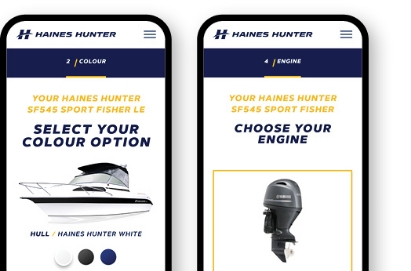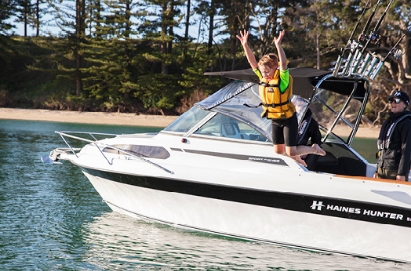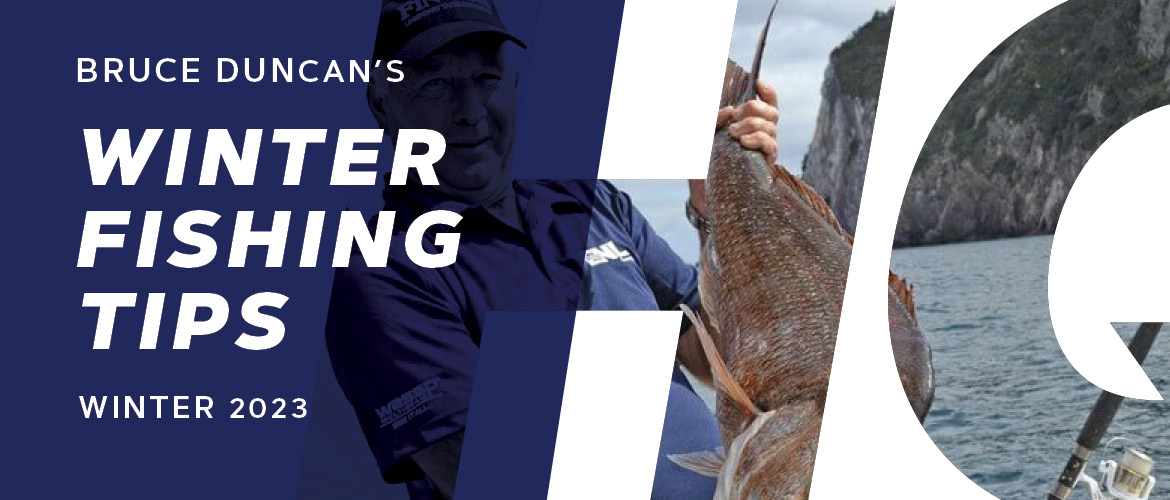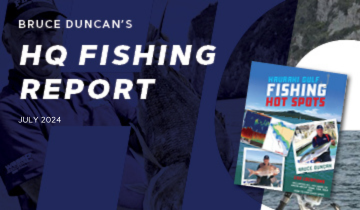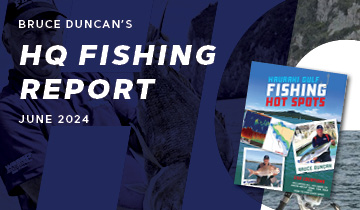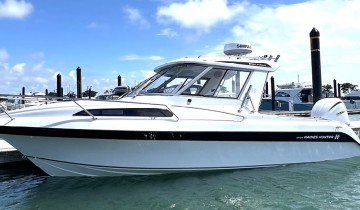Winter fishing can be frustrating and challenging yet at times the most rewarding time of the year, sure it may be cold out on the water, but just getting up and out of bed early in the cold and dark can be a mission in itself but the rewards are well worth it.
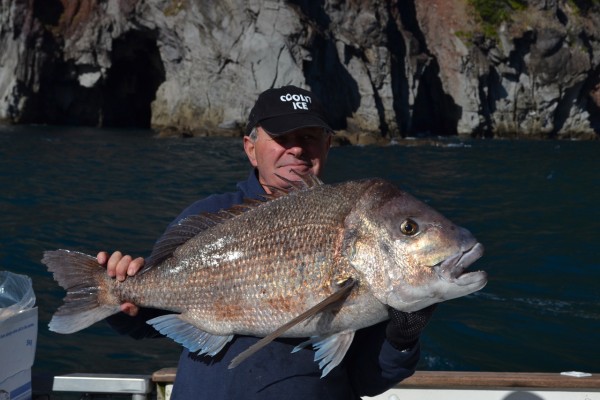
My first tip has landed me in the dog box in the past but it pays off. Before you go to bed, when all is quiet in the house sneak down to the bathroom. Toss all the damp towels off the heated towel rail (except your own of course) on the floor, now wrap all your fishing clothes and socks tightly around the heated towel rail bars. I even put my sea boots on top of the hot water cylinder overnight. Getting into warm clothes after a shower makes the morning quick and painless. However, I strongly suggest putting the damp towels back on the rail before you bail out the front door. If you do forget, make sure you switch off your cell phone. I can assure you, the call from home is not one that will be wishing you luck.
Heading to the normal summer spots can be very hit-and-miss. The majority of Snapper over winter are either right in close in the foul or out wide in deep water. Habitat is what matters when it comes to targeting fat winter Snapper. Look out for small patches of foul ground or nooks and crannies on the shoreline. These spots can hold a surprising amount of Snapper. Success is simply a matter of making a game plan and sticking to one fishing spot to fish over a full tide cycle.
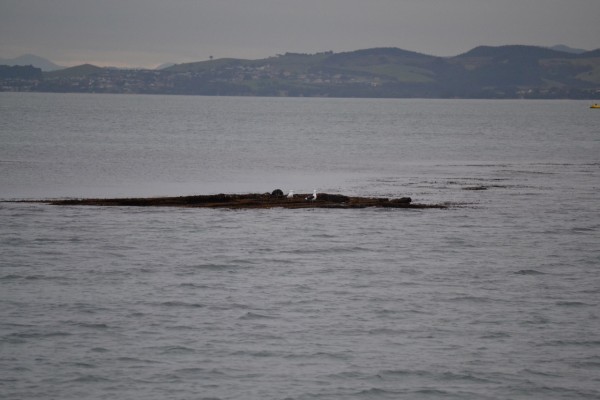
Over the years I have built up a database of where I should fish in different tide and wind directions. At low tide move in close to the shoreline and scope it out thoroughly. See what type and volume of kelp is present and observe the terrain from the shore to open sand. This is a habitat that holds significant food sources for fish such as Limpets, Cat's eyes, and Kina. This is crucial for the area to be able to sustain a resident population of fish over winter.
There is a limitless number of spots one can target over winter. In open sandy bays, you can often find small patches of foul just the size of a small car. I found a tiny bit of rock in three meters of water off Mission Bay beach, smack bang in the middle of Auckland. It produced three Snapper between one and three kilos. The key is to take note of these rock formations and shoreline opportunities then work out which wind and tide direction would be best to target them. Set a game plan and target the spot over the course of a full tide run.
Berley is critical to getting the Snapper to come out from the kelp and into a feeding mode. It is, however, just as important to toss out a hand full of chopped-up ground bait every 10-15 minutes. This is because berley is mostly just a smell whereas the ground bait is something for the fish to chew on.
Ground bait in tiny pieces are similar size to the food that they are naturally feeding on. Tossing the bait far from the boat in all directions allows it to drift down and release a scent. Once the Snapper get a taste for the ground bait, they come up the berley trail and are more likely to pick up your line.
Over winter I rarely use whole or big baits unless I am targeting big fish for the smoker. I use one rod with either a Mullet head, whole Jack Mac, or slab of Kahawai. For the average fish, however, I use smaller baits. This is because the Snapper mostly just pick at and mouth the bait as they would when feeding on Crab, Limpets, and the likes.
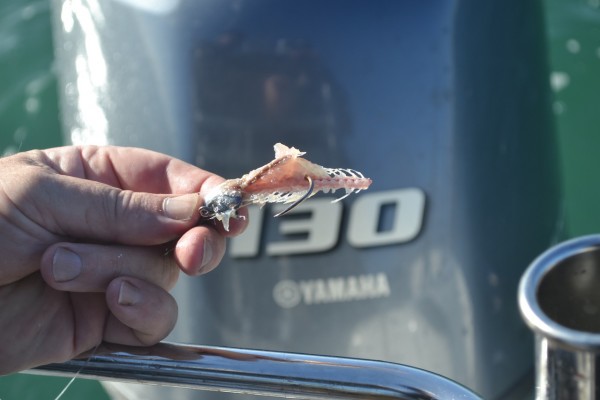
The way Snapper feed in winter often fools people into thinking the fish are only small bait robbers as all they see and feel on the line are tiny picks and taps. When the line is wound in you'll find scraps or boney remnants left on the hook.
There is a reason Snapper just pick and mouth baits in winter. Because they are largely living on body fat, they only snack when they have the urge. They are under no pressure or threat of other fish challenging them for food. They will do the same thing with your bait – just pick it up and chew it. Ground bait and berley is the key to drawing in more fish towards the boat so they become competitive which is the reason for setting a game plan to just target the one spot.
Because of the way that Snapper feed in winter, the way they are very aware of anything out of the normal. Any abnormal resistance they feel when picking up bait will make them drop it. To combat this, I only fish with 6 and 8 kg mono and don’t use a trace. A lighter line casts further with greater accuracy, lying straight and giving little resistance. This allows you to see line movement and detect the tiniest of bite without spooking the fish.
It may sound a bit odd, but with small baits, I use big hooks. Using bigger hooks such as 7/0 and 8/0 lets the barb of the hook be well exposed. This is critical to get a consistent and solid hook-up when you strike the fish. Strike hard and fast and keep the rod tip high. Because the fish are just mouthing the bait, most fish will be hooked by either their jaw or lip so keeping constant pressure on the fish is crucial until it is brought into the net.
The following spots are very close to Auckland and given the right conditions have never failed to produce a feed over the winter months.
Area 2; spots 20, 7, 14.
Area 3; spots 16, 17,18.
Area 4; spots 9, 12, 13.
Area 5; spots 1, 20, 11,
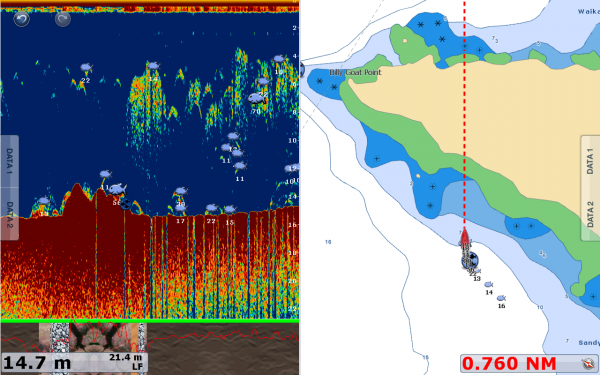
You will be amazed at how many Snapper in the 7-10 kg range will be lurking about in the shallows over winter. But before you put those fish in the bin, remember that they are not that great to eat unless smoked. They are also the prime breeding stock for the future, so why not release it?
Want to learn more about how Haines Hunter HQ could help you with your winter fishing trips? Come down to 50 Cawley Street and speak to our team.
Looking to service your boat before Summer starts? Book your Winter service here ⟶
